Task Parallel Library. Data Parallelism Patterns презентация
Содержание
- 2. Introduction to Parallel Programming Introduction to Parallel Programming Parallel Loops Parallel
- 3. Introduction to Parallel Programming Introduction to Parallel Programming Parallel Loops Parallel
- 4. Hardware trends predict more cores instead of faster clock speeds Multicore
- 5. Some parallel applications can be written for specific hardware Potential parallelism
- 6. Decomposition Parallel programming patterns aspects
- 7. Tasks are sequential operations that work together to perform a larger
- 8. Tasks that are independent of one another can run in parallel
- 9. Tasks often need to share data Scalable sharing of data
- 10. Understand your problem or application and look for potential parallelism across
- 11. Concurrency is a concept related to multitasking and asynchronous input-output (I/O)
- 12. With parallelism, concurrent threads execute at the same time on multiple
- 13. Amdahl’s law says that no matter how many cores you have,
- 14. Whenever possible, stay at the highest possible level of abstraction and
- 15. Use patterns Parallel programming tips
- 16. Based on the .NET Framework 4 Code examples of this presentation
- 17. Introduction to Parallel Programming Introduction to Parallel Programming Parallel Loops Parallel
- 18. Parallel programming patterns
- 19. Use the Parallel Loop pattern when you need to perform the
- 20. Parallel.For
- 21. Parallel.ForEach
- 22. Almost all LINQ-to-Objects expressions can easily be converted to their parallel
- 23. Use PLINQ’s ForAll extension method in cases where you want to
- 24. The .NET implementation of the Parallel Loop pattern ensures that exceptions
- 25. Parallel loops Parallel loops variations
- 26. Writing to shared variables Dependencies between loop iterations
- 27. Referencing data types that are not thread safe Dependencies between loop
- 28. Sequential iteration Breaking out of loops early
- 29. Use Break to exit a loop early while ensuring that lower-indexed
- 30. Calling Break doesn’t stop other steps that might have already started
- 31. ParallelLoopResult
- 32. Use Stop to exit a loop early when you don’t need
- 33. External Loop Cancellation
- 34. Special handling of small loop bodies
- 35. The number of ranges that will be created by a Partitioner
- 36. You usually let the system manage how iterations of a parallel
- 37. The PLINQ query in the code example will run with a
- 38. Sometimes you need to maintain thread-local state during the execution of
- 39. Random initialization of the large array
- 40. Calling the default Random constructor twice in short succession may use
- 41. You can substitute custom task scheduling logic for the default task
- 42. Step size other than one Anti-Patterns
- 43. Adaptive partitioning Parallel loops design notes
- 44. Introduction to Parallel Programming Introduction to Parallel Programming Parallel Loops Parallel
- 45. Parallel programming patterns
- 46. The pattern is more general than calculating a sum The
- 47. Sequential version Calculating a sum
- 48. PLINQ Calculating a sum
- 49. PLINQ is usually the recommended approach Parallel aggregation pattern in .NET
- 50. The PLINQ Aggregate extension method includes an overloaded version that allows
- 51. Aggregation using Parallel For and ForEach Design notes
- 52. Aggregation in PLINQ does not require the developer to use locks
- 53. Task Parallel Library Data Parallelism Patterns
- 54. Скачать презентацию







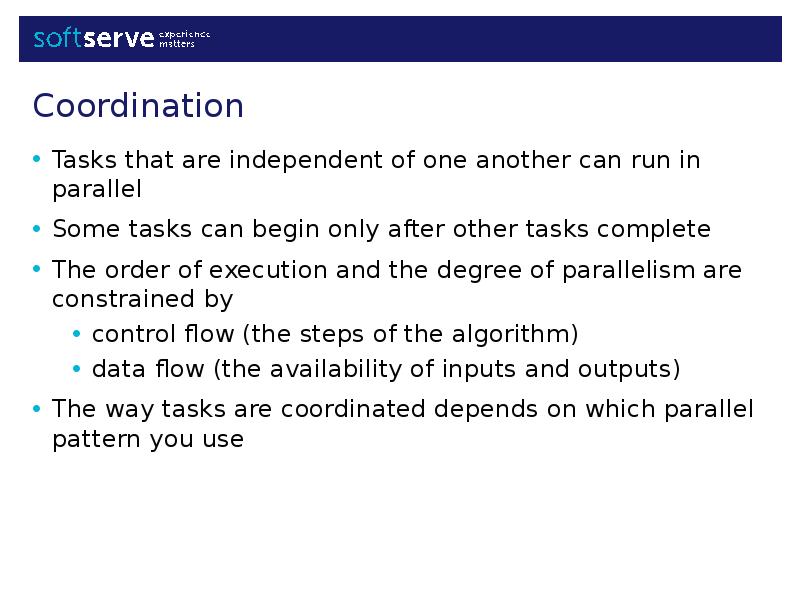
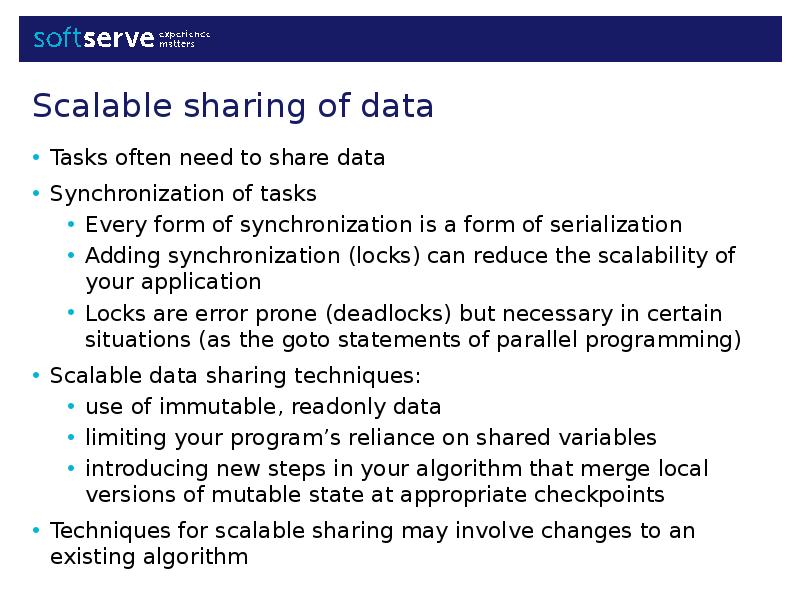
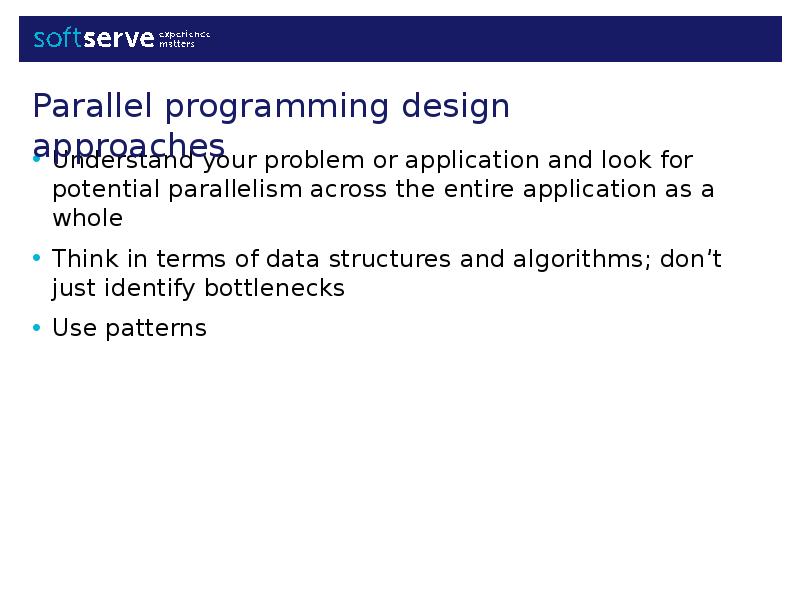
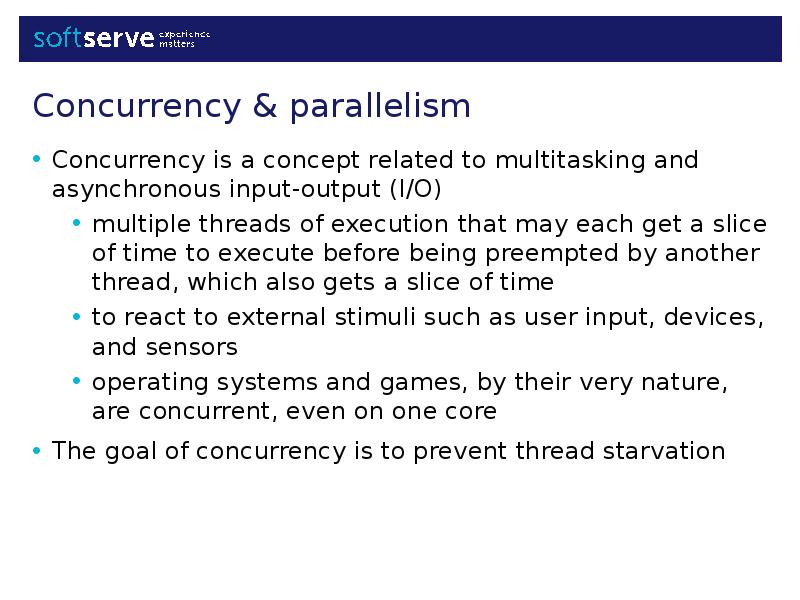
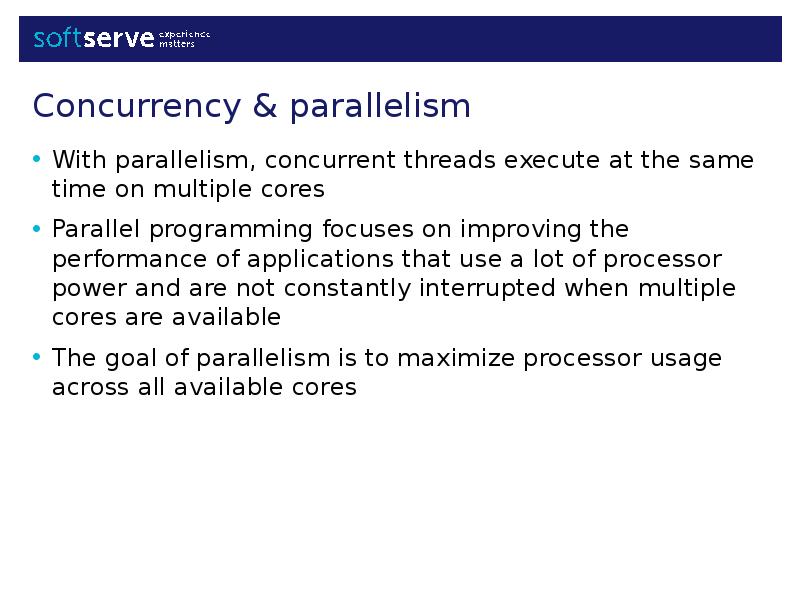
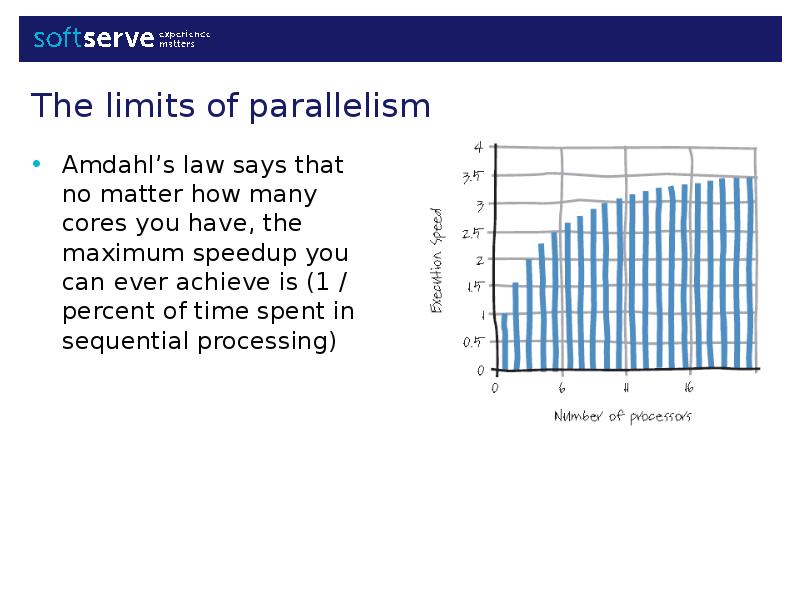
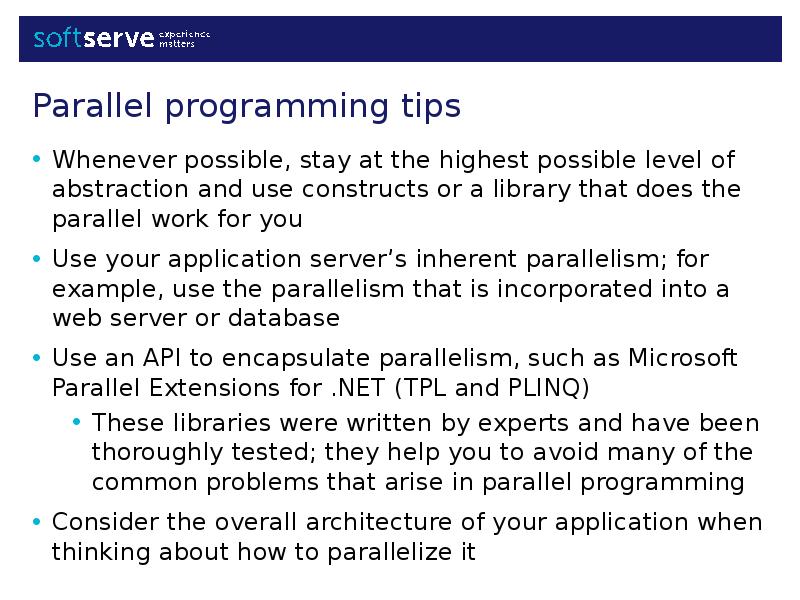
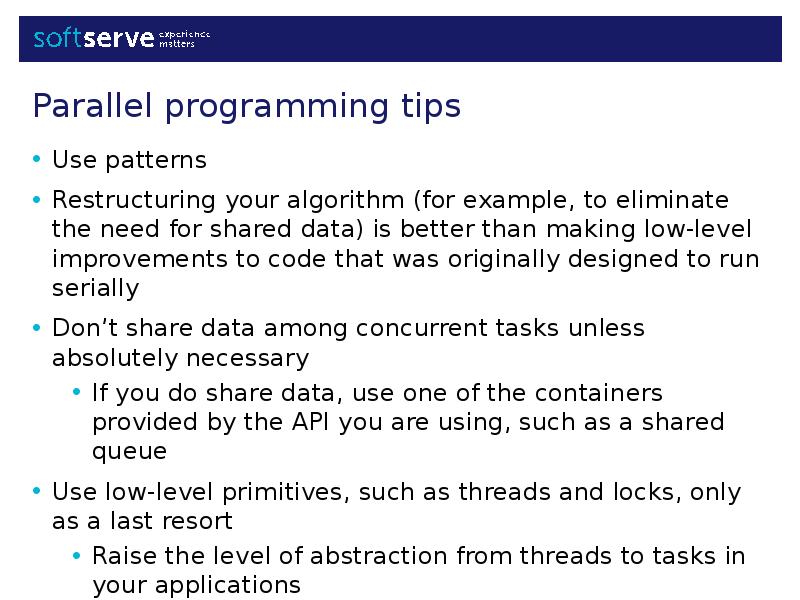
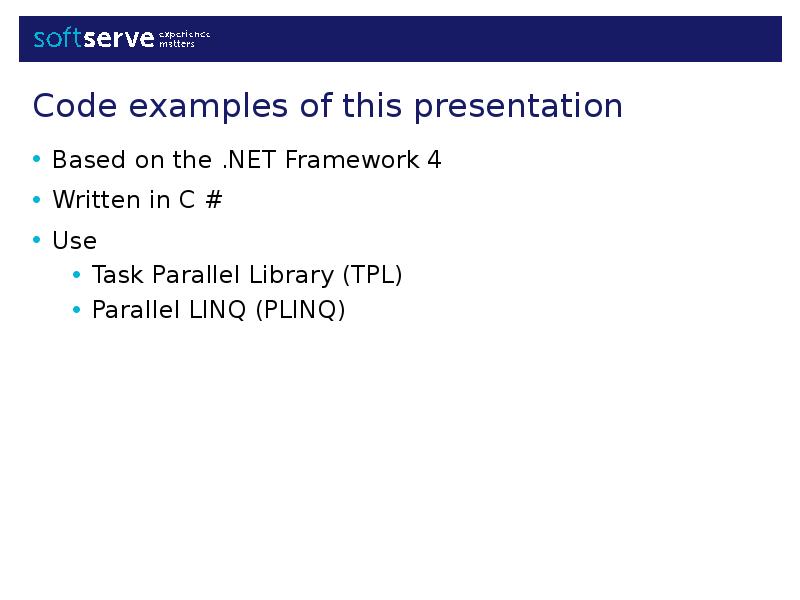
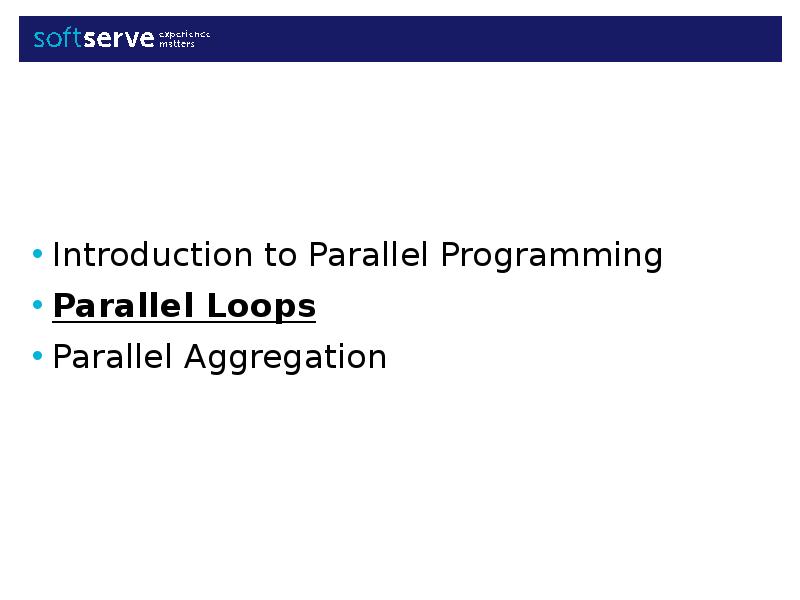
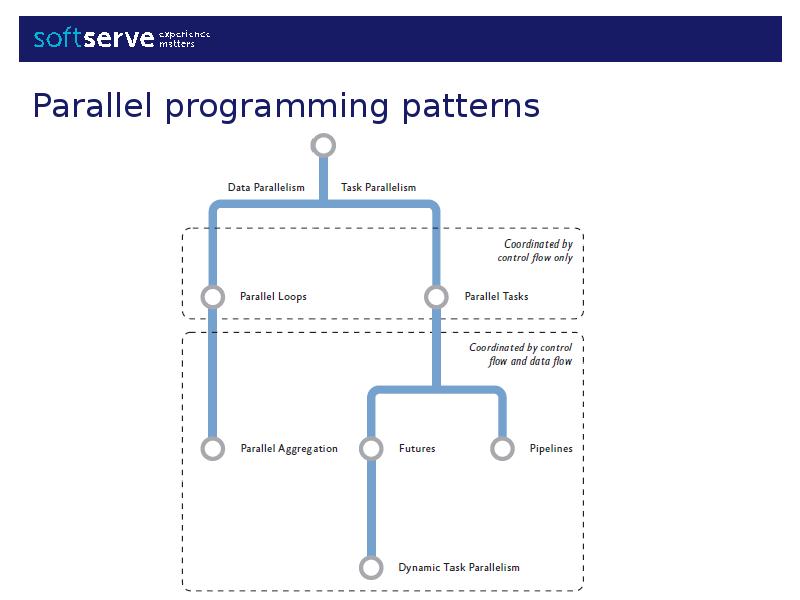
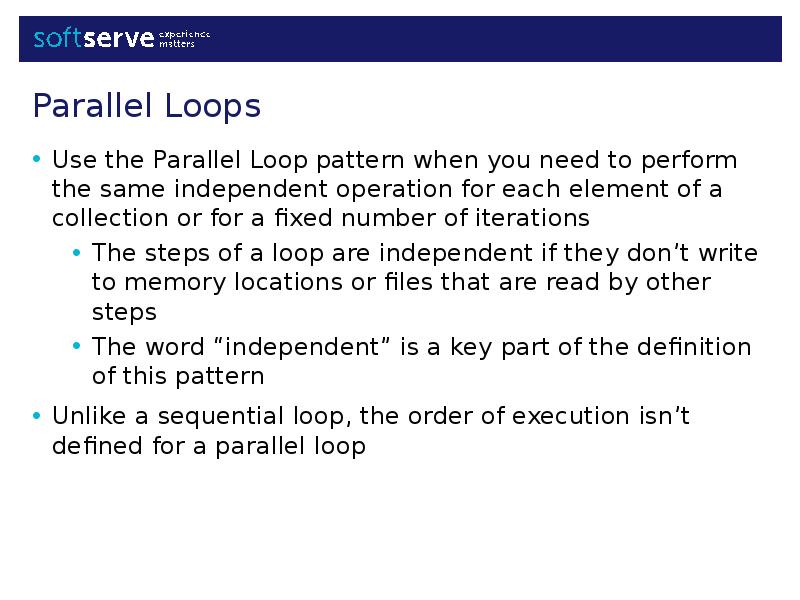
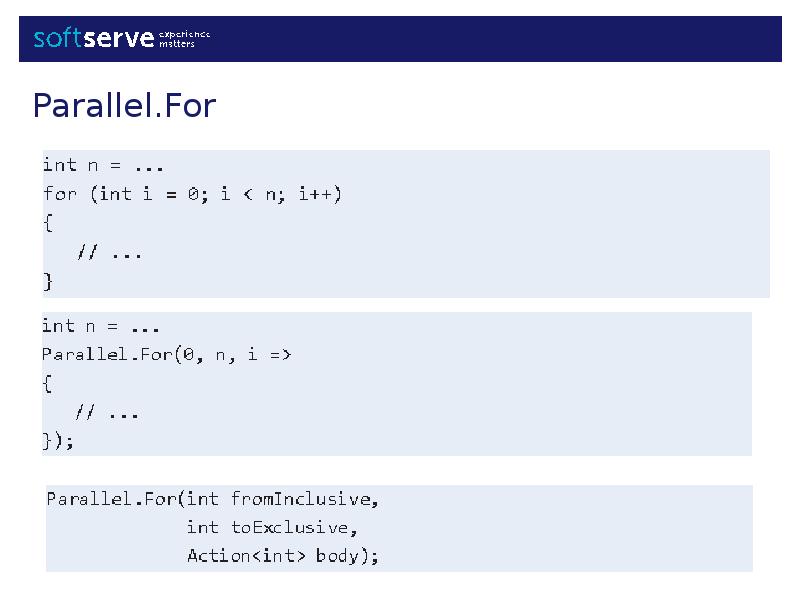
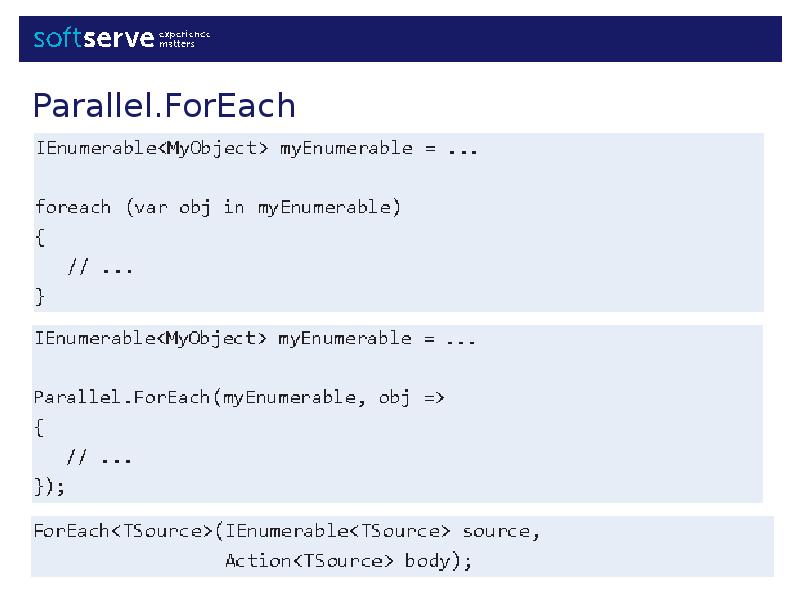
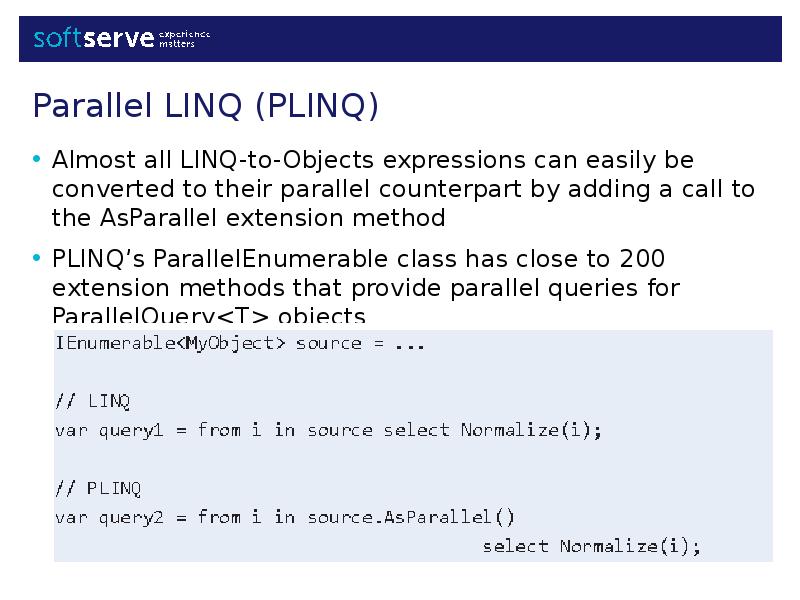
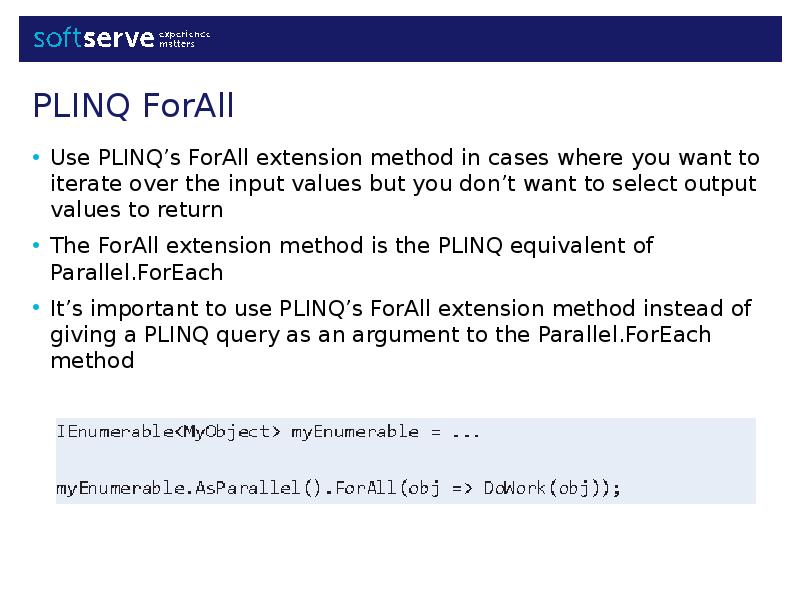
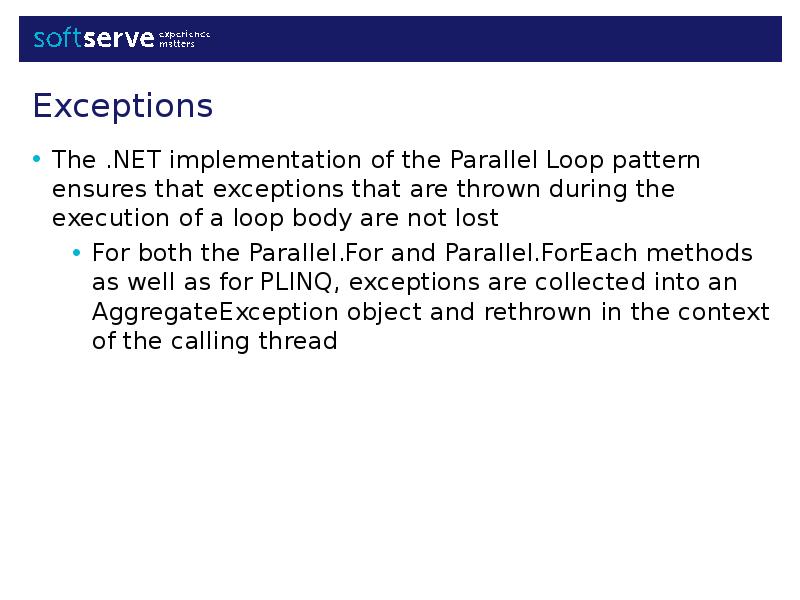
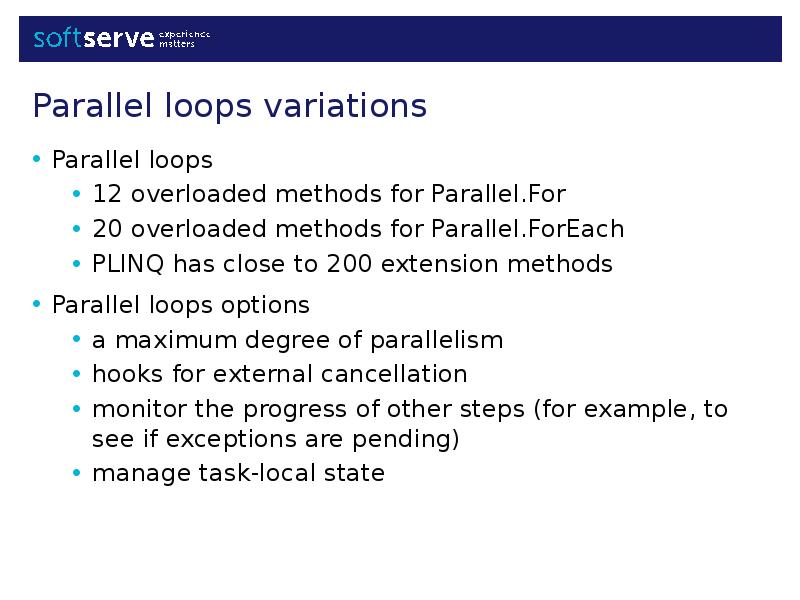
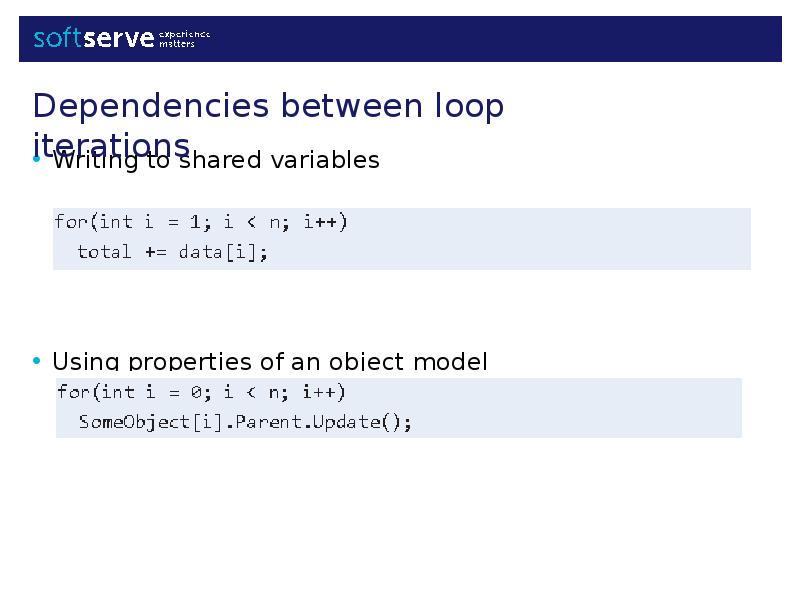
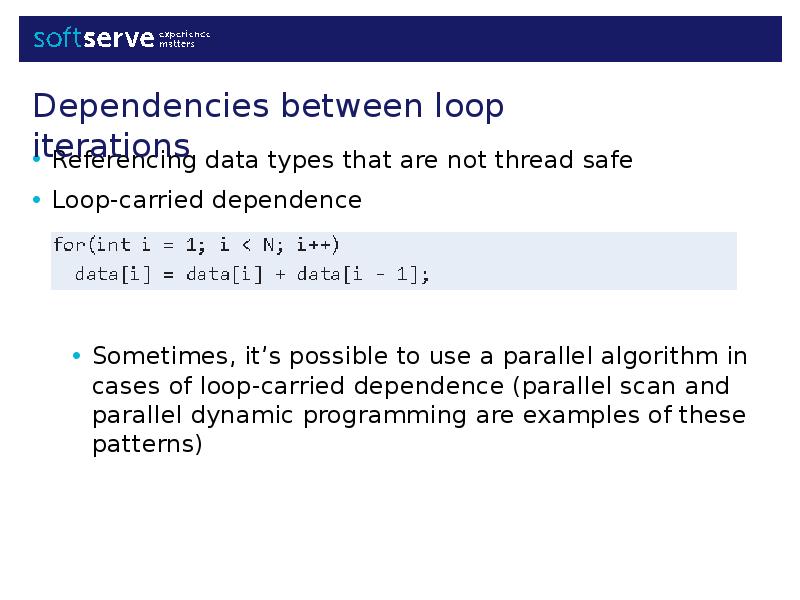
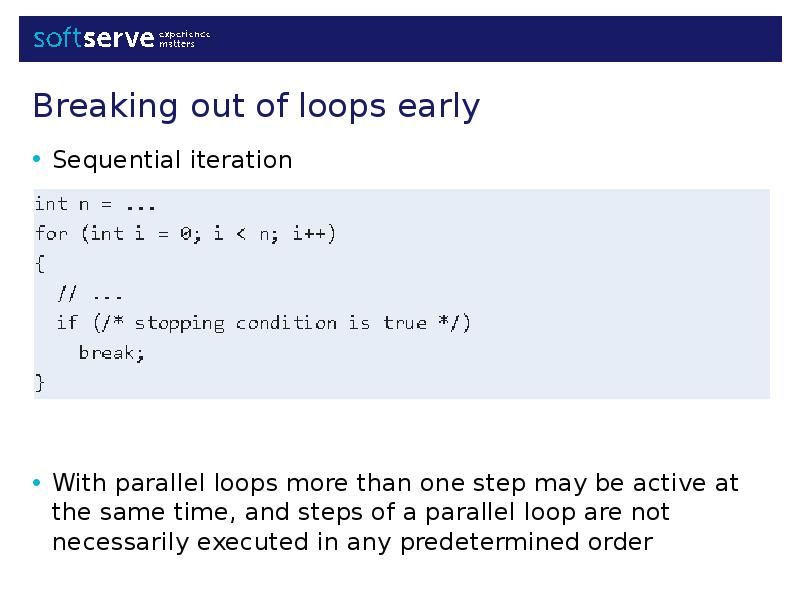
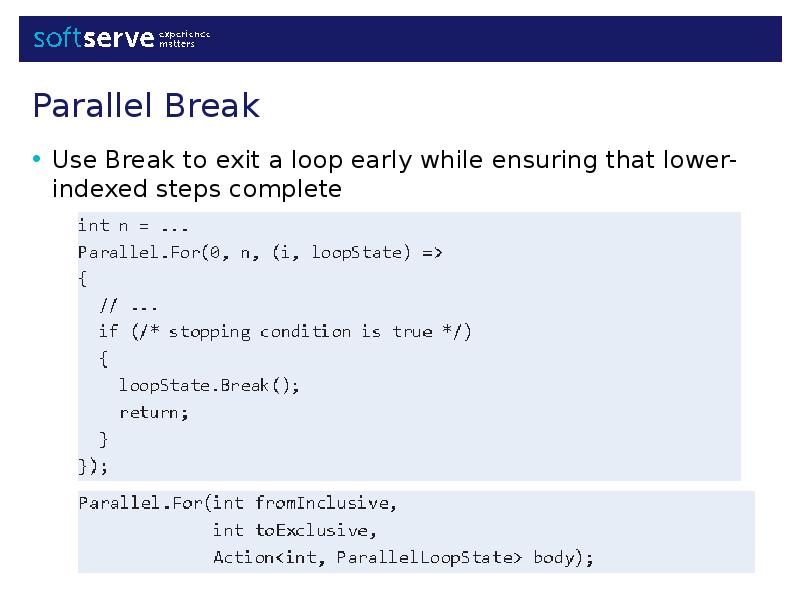
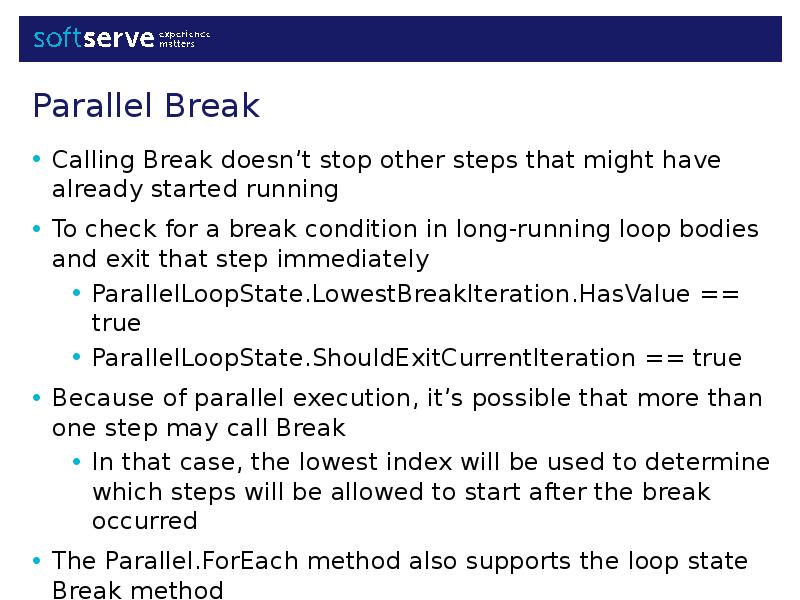
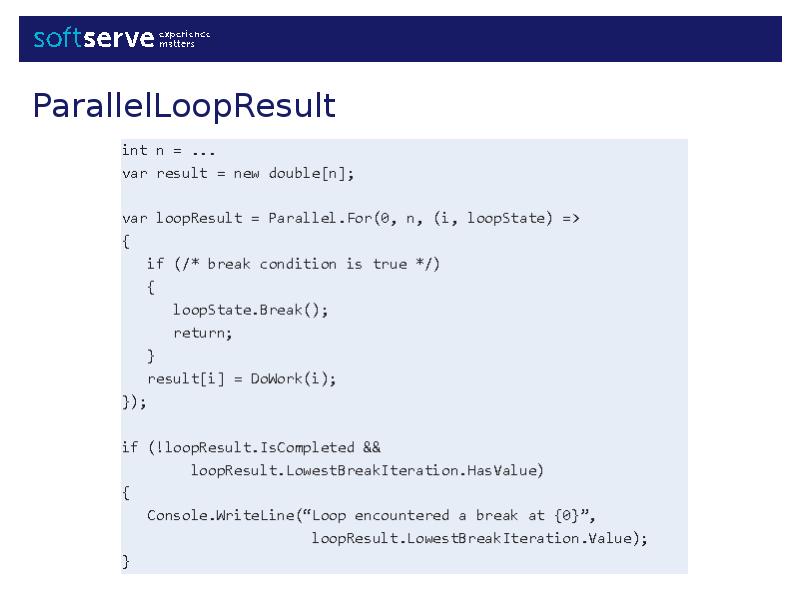
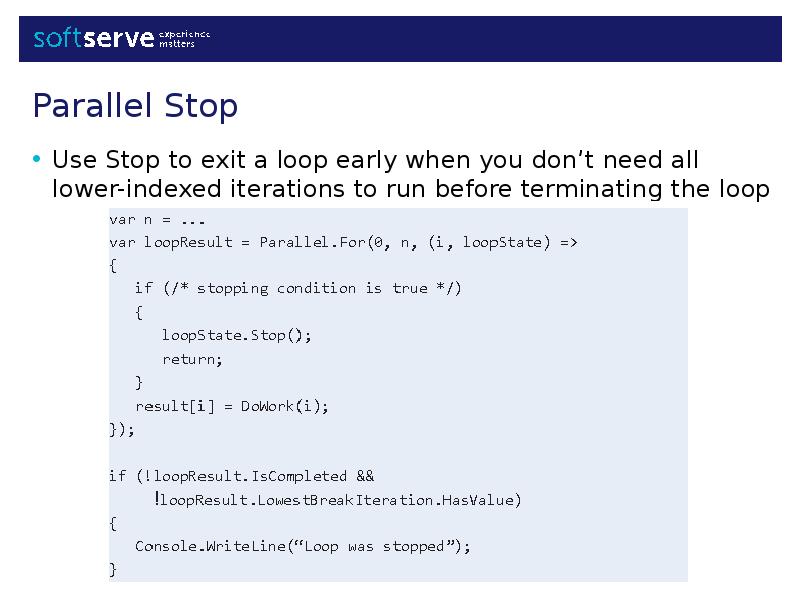
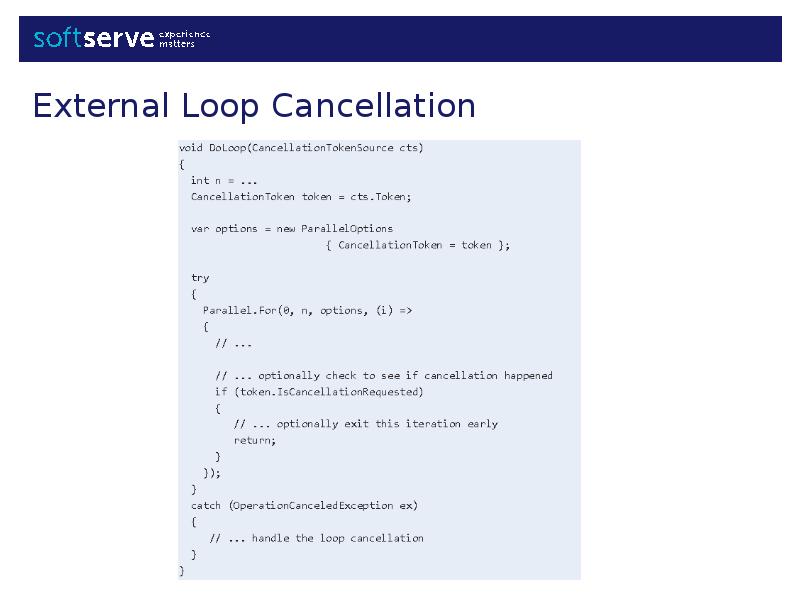
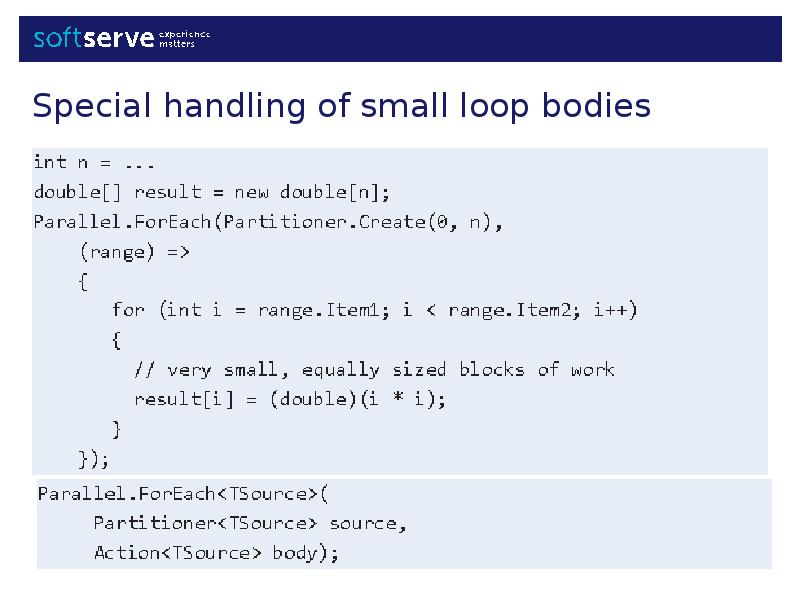
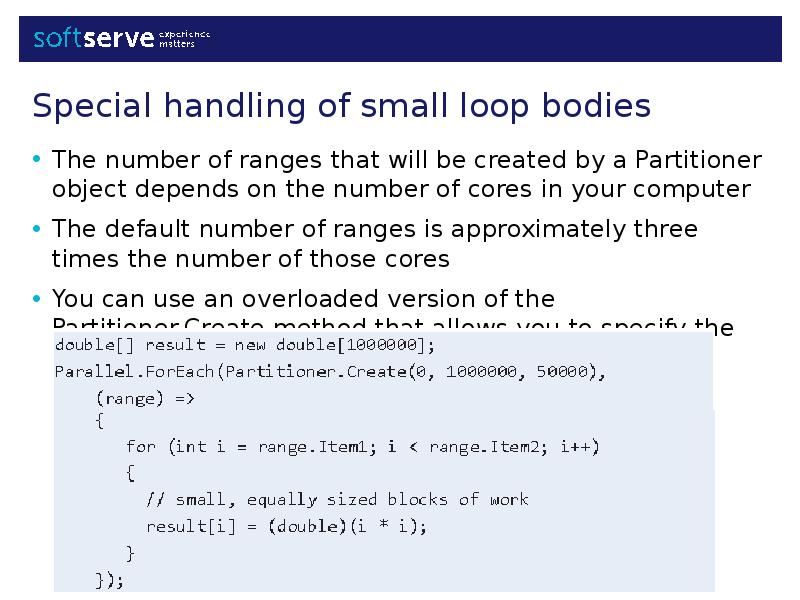
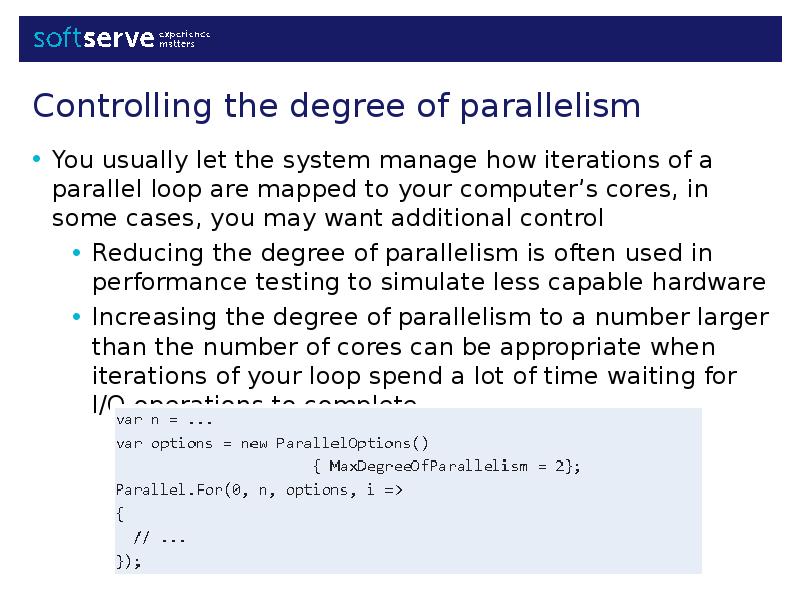
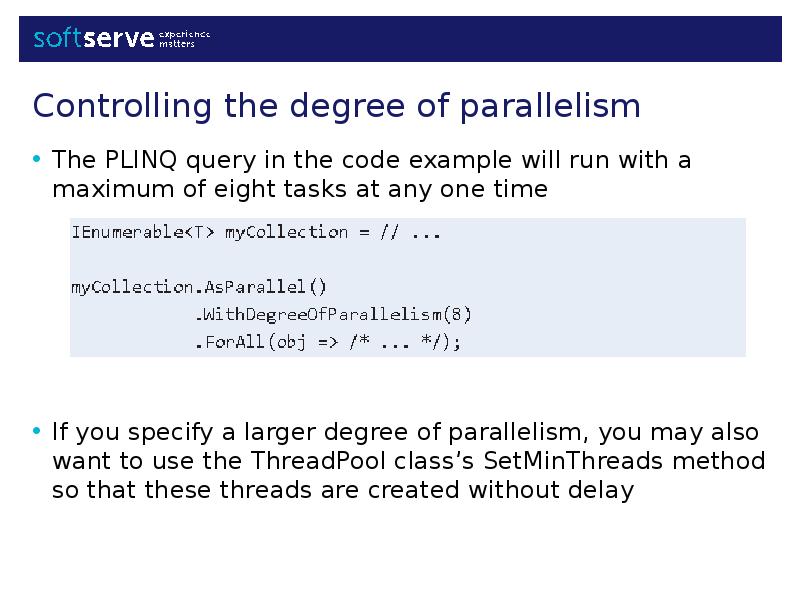
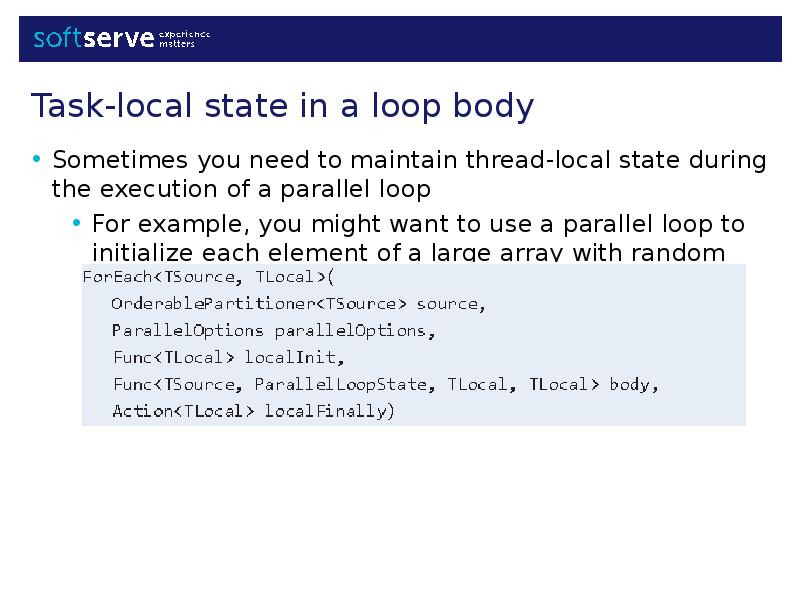
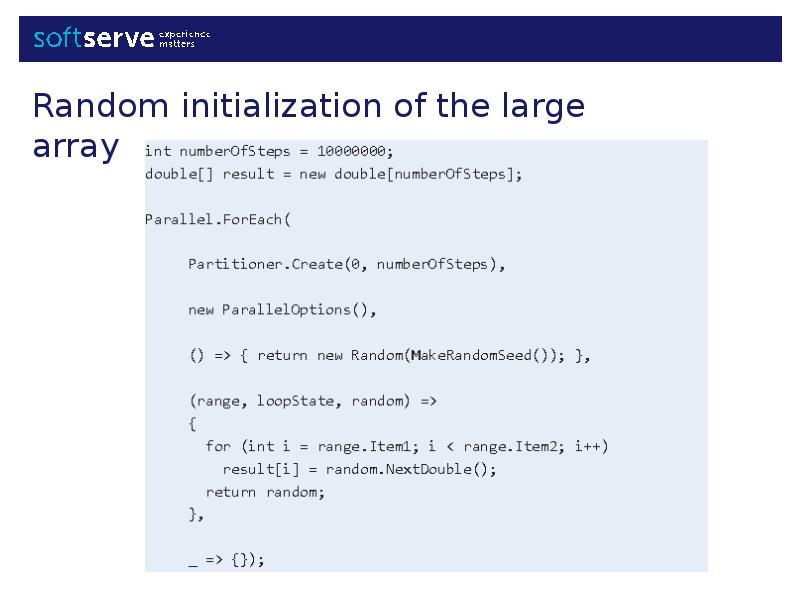
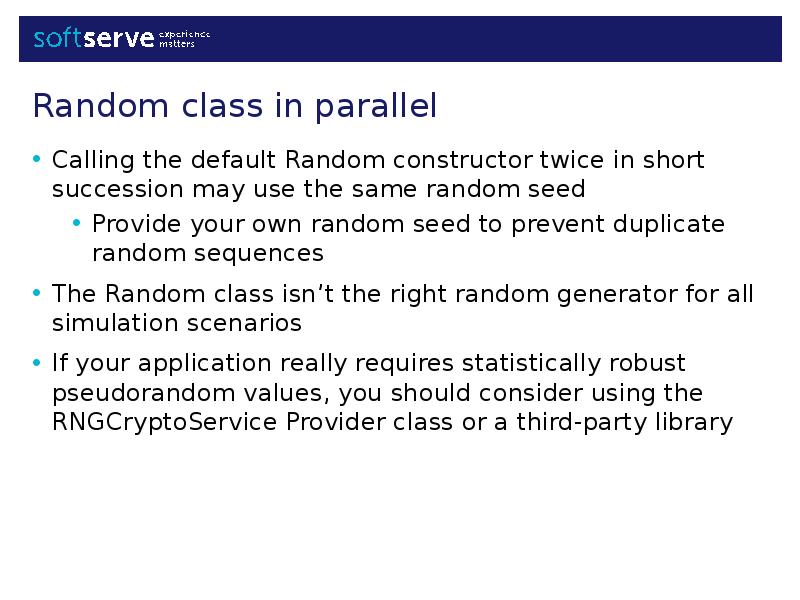
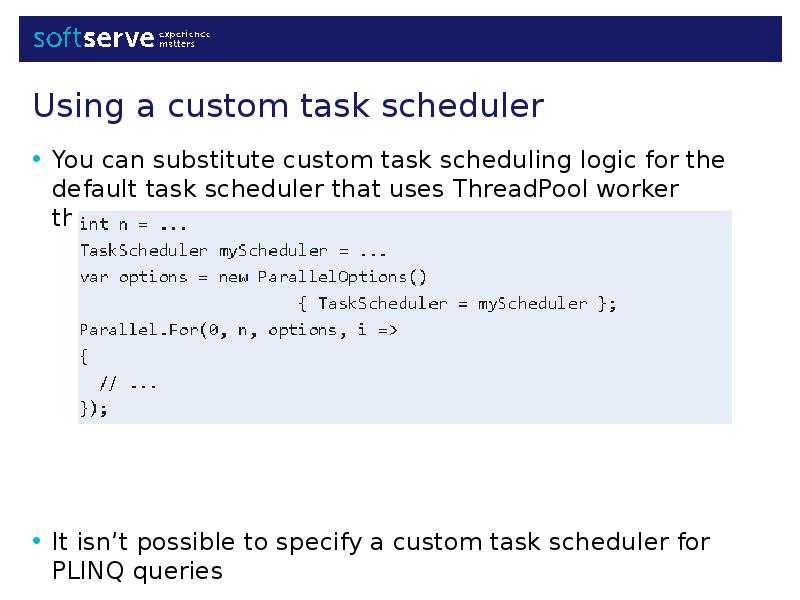
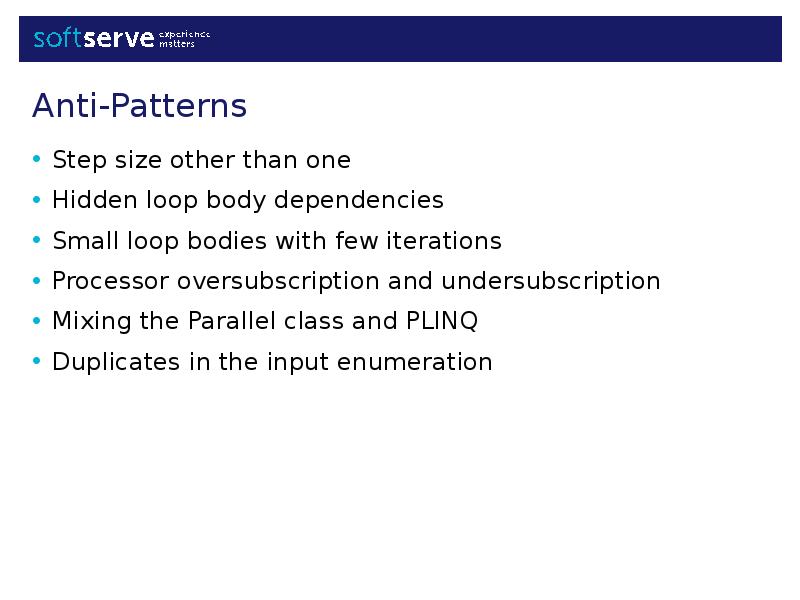
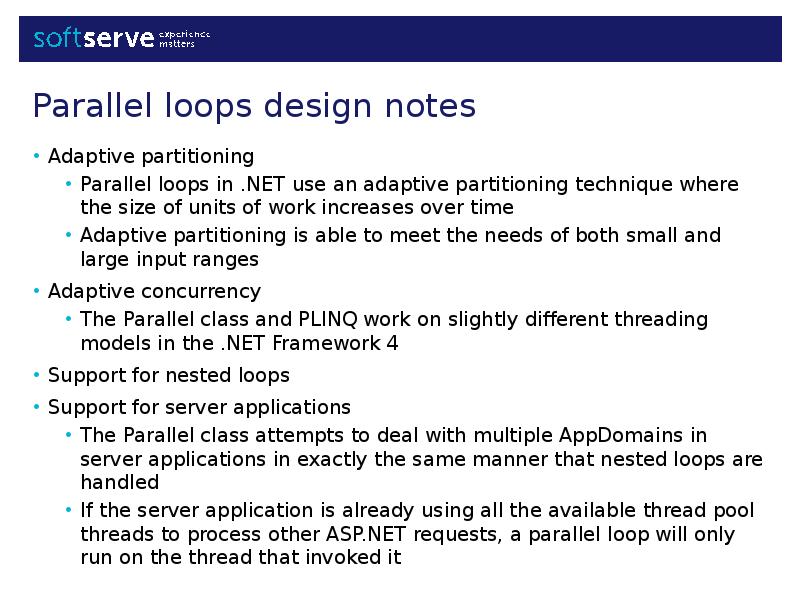
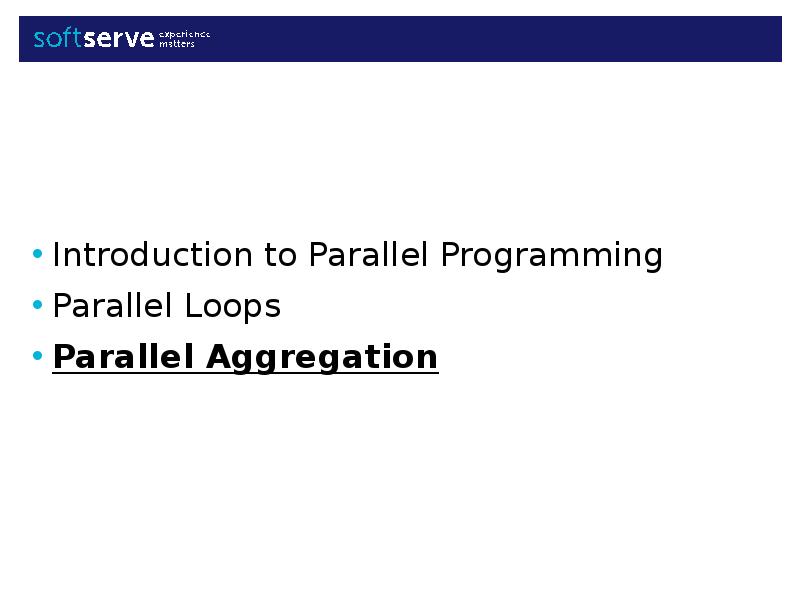
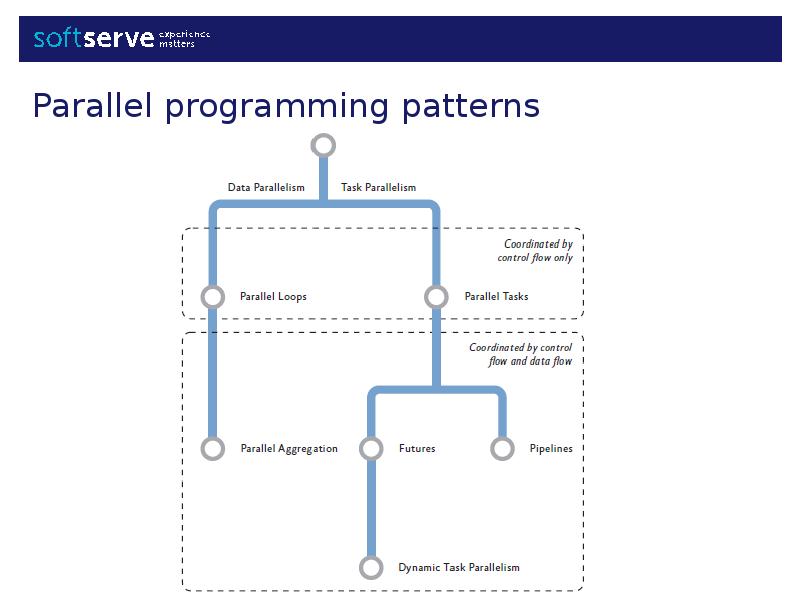
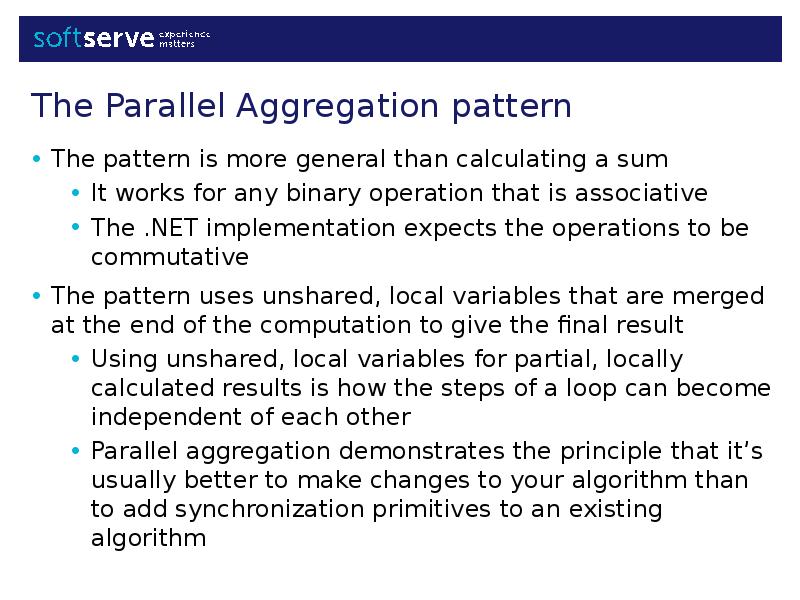
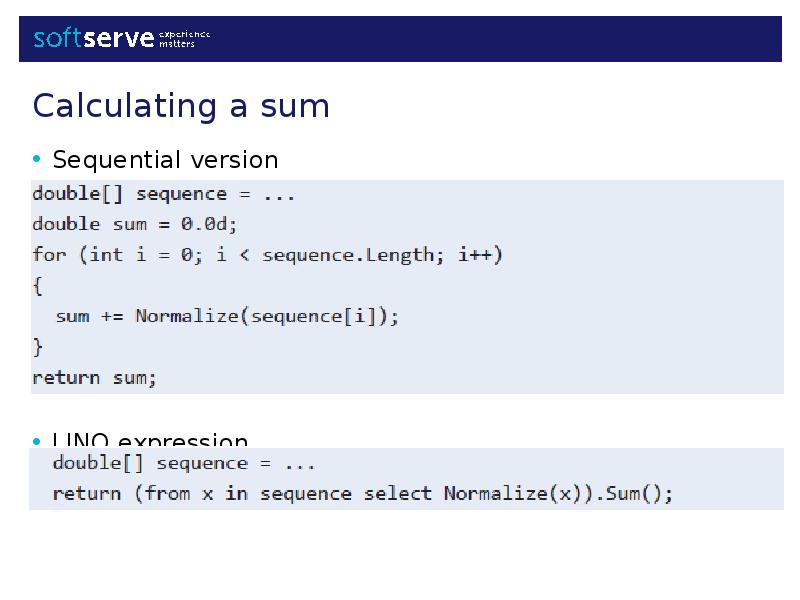
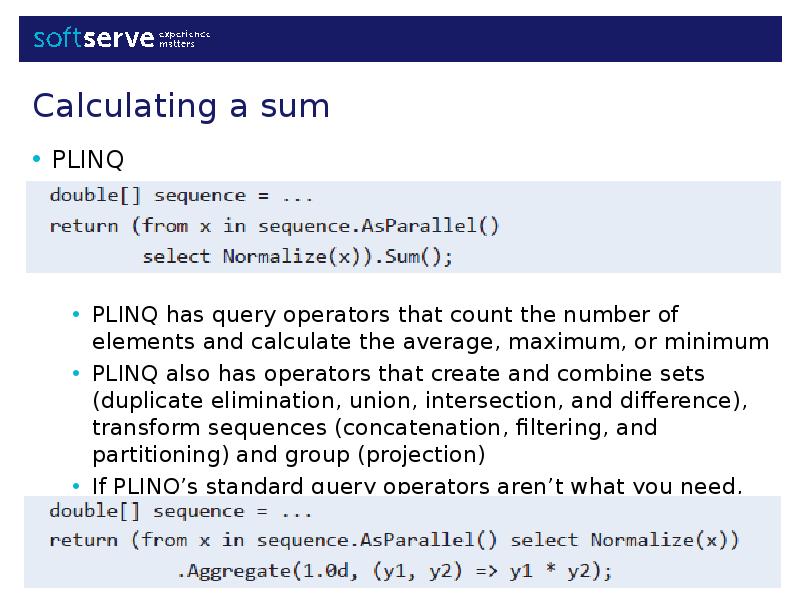
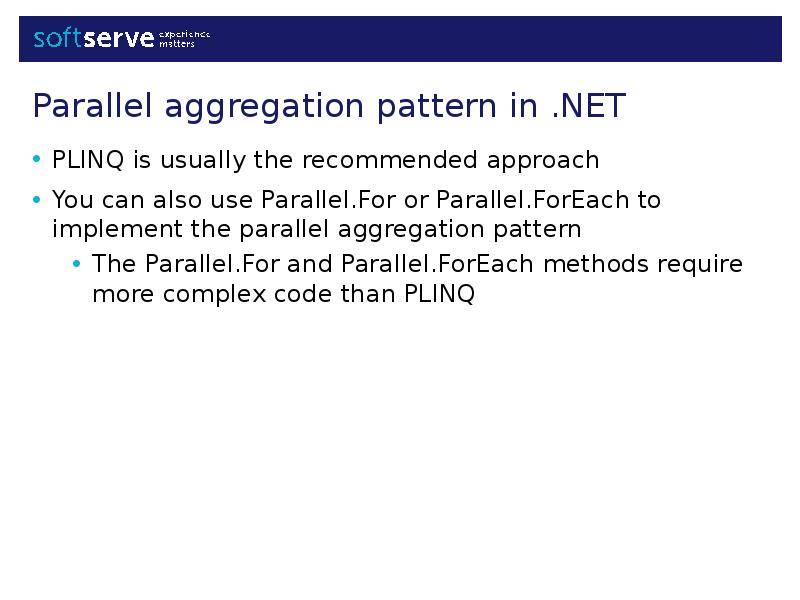

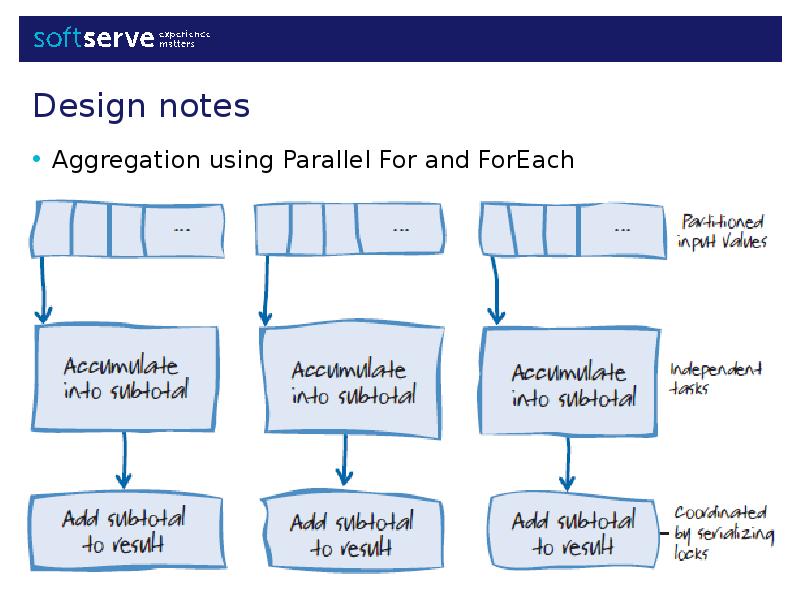
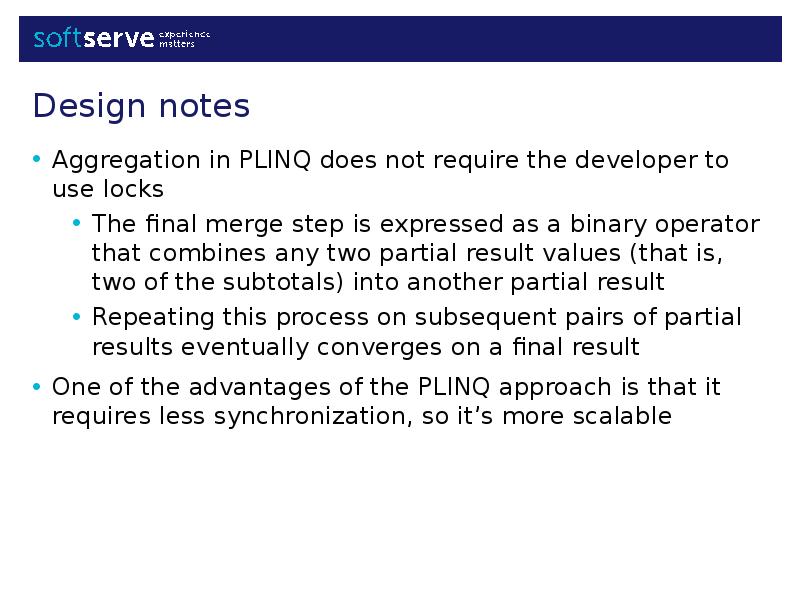
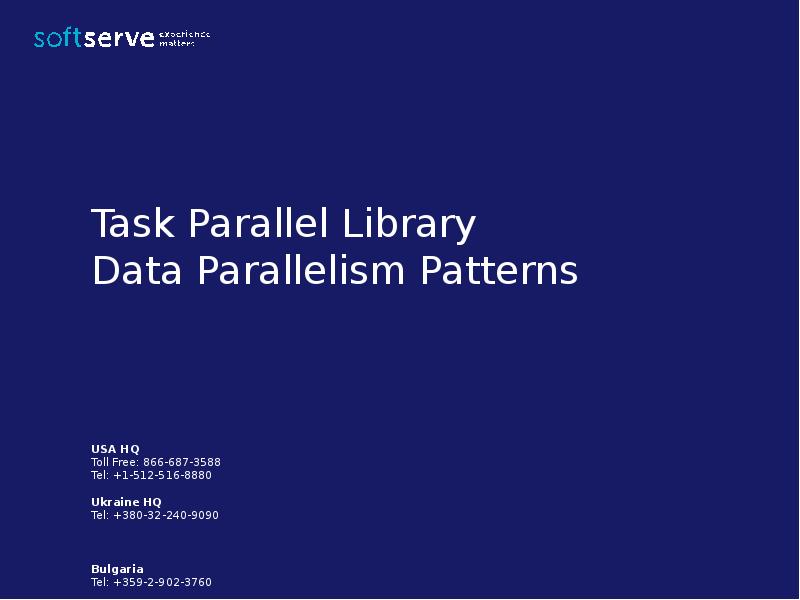
Слайды и текст этой презентации
Скачать презентацию на тему Task Parallel Library. Data Parallelism Patterns можно ниже:
Похожие презентации





























